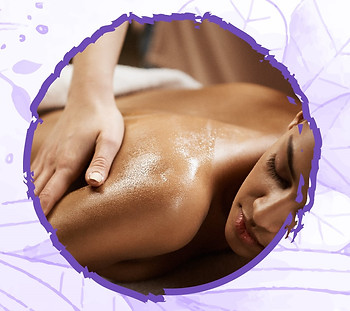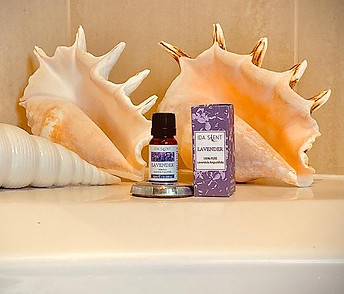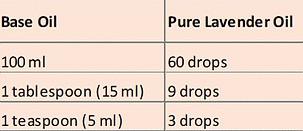
How to use lavender oil
Lavender oil is 'essential' for every home. In a small bottle it generously helps in many ways. It is considered as natural antibiotic, antiseptic, antidepressant, sedative, and detoxifier. It promotes healing and helps preventing scarring. It also stimulates the immune system besides many more other benefits like;
RELAXATION
Lavender oil scent coming with the vapor helps relaxing and improving the sleep quality. There are many vaporizing methods available now. Electric/ultrasonic or reed diffusers, terracotta oil burners may do great work.
Alternatively, you can simply put a few drops of lavender oil in a small bowl of hot water placed on a radiator or any other source of heat. (This method is also useful for disinfecting a sick room, preventing the spread of contagious illness and repelling insects)
AROMATHERAPY
Massage - add a few drops to your massage oil into a carrier oil (eg. light vegetable oil) or base oil such as sweet almond oil, jojoba or grapeseed. The dilution should be in the region of 2-3%.
Bath - add 8–10 drops to the bath water and relax in the water for at least 10 minutes.
For bathing the feet or hands, add 6–8 drops of lavender oil to a bowl or shallow bath of warm water and soak for 5–10 minutes.
Volumetric guidance:
When mixing or diluting the essential oil consider the following:
20 drops of essential oil are approximately 1 ml. Therefore, in order to obtain 3% diluted essential oil the following volumes should be used.



HEALTH & WELLBEING
Headache - add a few drops of oil to a compress to ease a headache.
Emotional stress - dab a few drops on pressure points to relieve anxiety, depression, emotional stress, and exhaustion.
Congestion - add a few drops to steaming water and lean over it, covering your head with a towel, to give yourself a facial relief or help clear congestion.
Sunburn – mix a few drop with water and apply to sunburned skin to help cool the burn.
Hair and scalp - mixing a few drops with olive oil will make a great hair tonic. It will leave your hair silky and disinfect your scalp (it will kill lice, lice eggs, and nits).
Dental care and gargling - for the treatment of mouth and gum infections, add 5–10 drops of lavender oil to a glass of warm water, mix well, then rinse the mouth and/or gargle.
Respiratory complaints and Inhalation - put up to 8 drops on a tissue or handkerchief for inhalation throughout the day (or onto a pillow for night use). For respiratory complaints, make a steam inhalation by adding about 5 drops of lavender to a bowl of steaming water. Cover your head with a towel and breathe deeply for about 5–10 minutes with your eyes closed.
Skin – add 3% lavender oil to the creams, gels, lotions, masks and oils. For skin care, additional carrier oils such as avocado, hazelnut, borage, peach and apricot kernel can also be included in the blend to suit different skin types.
Shampoo and hair care – add 60 drops (3%) lavender oil into 100 ml good, neutral pH value shampoo.
CLEANING
-
Add a few drops to your mop water for fragrance and antiseptic benefits.
-
Put a few drops on a clean cloth tossed into your dryer and infuse the scent of lavender into your laundry.
OTHER
-
Use lavender oil as a solvent to remove glue left over from price stickers or labels.
-
Use it as a natural cologne by dabbing a few drops behind your ears.
-
Add a few drops to any natural face mask to detoxify and shrink pores.
-
You can prepare a light, simple lavender water (Mix 100 ml distilled water and 25 - 30 drops of lavender oil. Shake well before use).
Pure and Natural Lavender Oil
Adulteration is a problem
A high quality pure essential oil of true lavender should be a pale yellow, mobile liquid with a pungent top note which quickly disperses, leaving a soft, fresh, floral and long-lasting aroma.There are over 150 different constituents in lavender oil, but linalool and linalyl acetate are the main ones. Mostly these two give lavender its light, sweetish note. The linalyl acetate content of lavender oil is used as a criterion of quality.
Unfortunately, adulteration is a problem. Two of the major constituents – linalool and linalyl acetate – can be produced synthetically at a fraction of the cost. For example, in 1992 official figures proved that the French production was less than 50 tonnes of lavender, yet they still managed to export well in excess of 100 tonnes.

How to ensure the quality?
Gas chromatography is the main method used for analysing the exact composition of essential oils and for ascertaining their quality. A skilled technician can identify a lavender oil cut with synthetic linalool, since there is a sub-component in synthetic linalool (called dihydrolinalool) which does not occur naturally in lavender oil. This trace would show up on a GLC (gas chromatography) machine.
